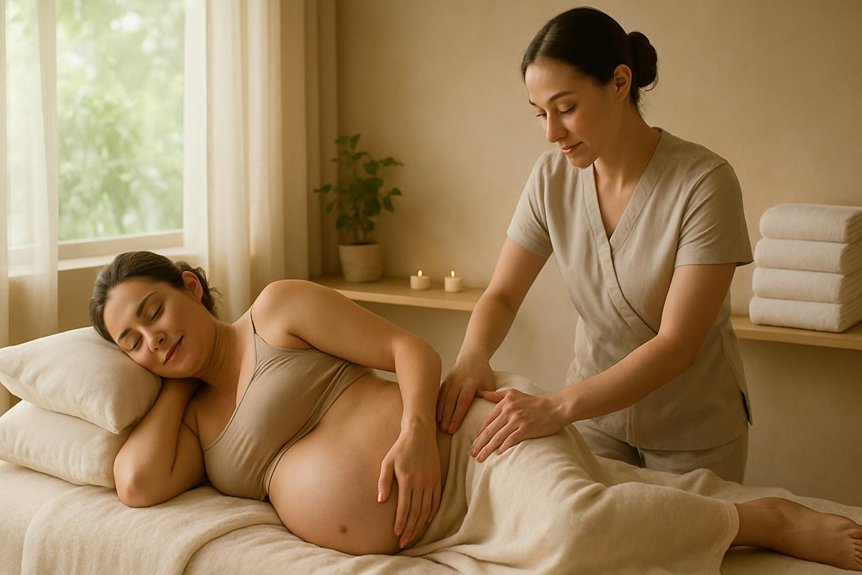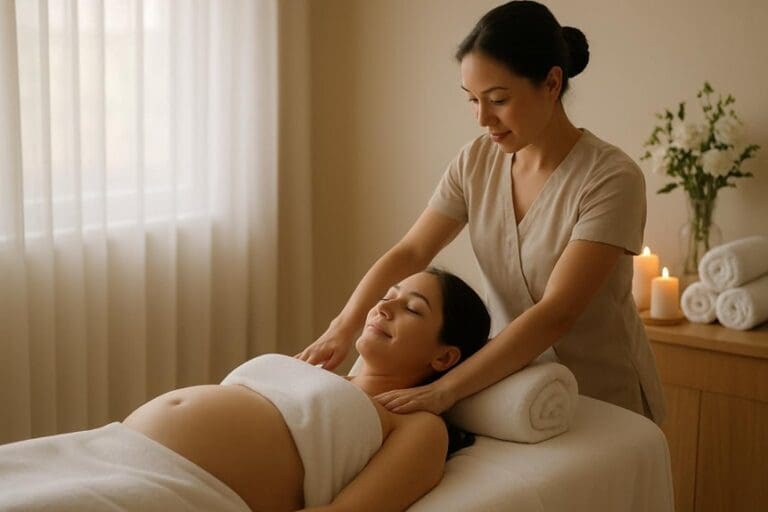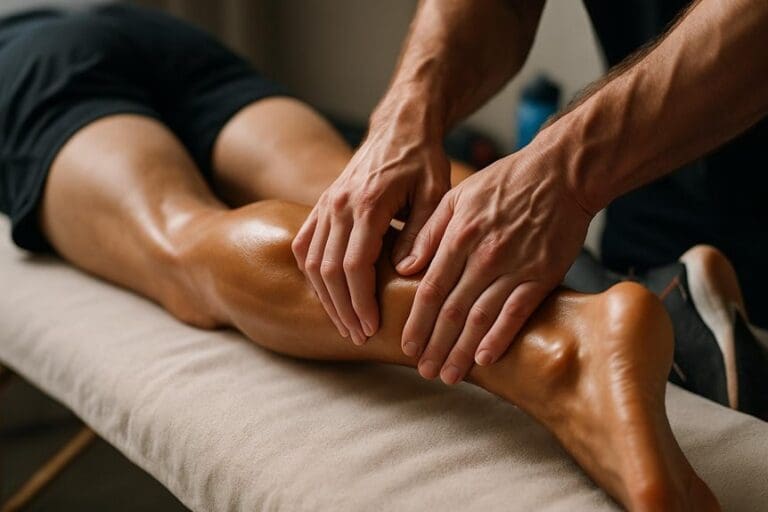Yes, massage is generally safe during pregnancy when performed by a therapist trained in prenatal techniques. Special consideration is given to positioning, pressure, and the methods used to guarantee both safety and comfort at each stage. Therapists avoid certain areas and adapt sessions for those with high-risk pregnancies or specific symptoms. Always consult a healthcare provider before booking a session. Discover how professional guidance and thoughtful techniques support health and wellbeing throughout this special time.
Understanding Prenatal Massage: What Makes It Different
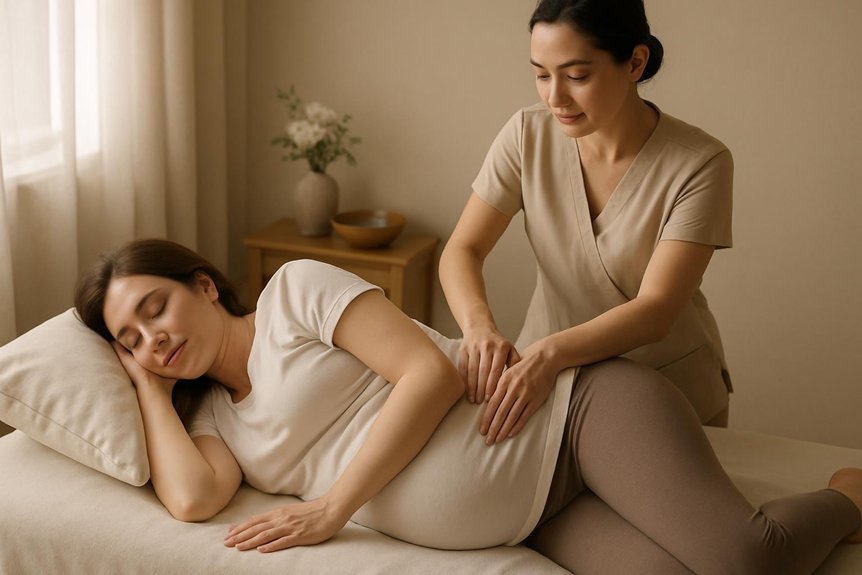
While massage therapy offers numerous benefits for overall wellbeing, pregnancy massage is uniquely tailored to address the specific needs and physiological changes experienced during pregnancy. At Spa & Massage, therapists are specially trained to understand the adjustments a woman’s body undergoes, such as shifts in posture, increased joint stress, and heightened sensitivity. Techniques are selected with care, ensuring comfort and safety for both mother and baby—gentle, nurturing touch is prioritised, and pressure points known to induce contractions are meticulously avoided. Special positioning, often with supportive cushions, is used to relieve pressure and enhance relaxation. Every session is guided by a thorough understanding of pregnancy’s stages, making prenatal massage a gentle, attentive experience designed to foster deep comfort, trust, and connection during a transformative time. In a similar way to sports massage, which supports athletes by addressing physical strain and recovery needs, prenatal massage is adapted to provide targeted benefits in response to the unique stresses on the body during pregnancy.
Benefits of Massage Therapy for Expectant Mothers
Massage therapy during pregnancy offers significant benefits, including relief from common discomforts such as back pain and swelling. Spa & Massage therapists also recognise its role in supporting emotional wellbeing and reducing stress for expectant mothers. Additionally, many clients report improved sleep quality following tailored prenatal treatments in our clinics.
Easing Common Pregnancy Discomforts
Pregnancy often brings a range of physical and emotional changes, many of which can cause discomfort for expectant mothers. Common issues such as back pain, swollen legs, muscle tension, and fatigue are frequently reported throughout pregnancy. At Spa & Massage, experienced therapists are trained to address these discomforts with specialised techniques, always prioritising the safety and comfort of both mother and baby. Gentle pressure, tailored positioning, and the use of nourishing, pregnancy-safe oils help to ease tension and promote relaxation. Regular sessions can improve circulation, reduce swelling, and provide relief from aches and stiffness. Our therapists recommend open communication during treatments to ensure every adjustment meets individual needs, creating a nurturing environment where mothers feel truly cared for and supported throughout their journey.
Supporting Emotional Wellbeing
A period of significant emotional fluctuation often accompanies the physical changes of pregnancy, making support for mental wellbeing just as essential as physical care. At Spa & Massage, therapists understand that nurturing emotional health is a crucial part of the experience for expectant mothers. Gentle, tailored prenatal massage can help reduce anxiety, ease emotional tension, and foster a sense of calm connection. Therapeutic touch, combined with a serene environment, can encourage the body’s natural relaxation response, supporting the emotional balance so many mothers-to-be seek. Clients frequently report feeling more grounded, comforted, and emotionally resilient after their sessions. Therapists at Spa & Massage approach each treatment with sensitivity and empathy, ensuring clients feel safe, cared for, and listened to throughout their pregnancy journey.
Promoting Restful Sleep
Why does restful sleep become elusive for so many expectant mothers? Physical discomfort, hormonal fluctuations, and emotional changes can all contribute to disrupted sleep during pregnancy. Regular massage therapy, as practised at Spa & Massage clinics, is known to alleviate many of these challenges by reducing muscle tension, easing joint pain, and promoting deep relaxation. By calming the nervous system and encouraging the release of serotonin, massage can help regulate sleep patterns naturally and safely.
Our experienced therapists use gentle, pregnancy-safe techniques and soothing oils to create a nurturing environment where mothers-to-be can truly unwind. Many clients find that after a tailored prenatal massage session, falling—and staying—asleep becomes much easier. Quality rest is essential for both mother and baby, and massage supports this significant need.
Safety Considerations and When to Avoid Massage During Pregnancy
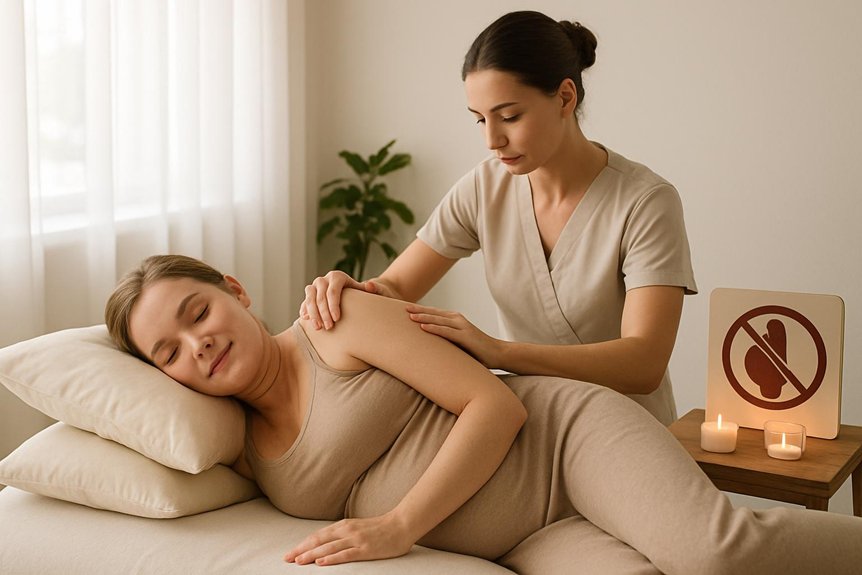
While massage can be highly beneficial during pregnancy, certain safety considerations must be observed to protect both mother and baby. Spa & Massage recommends special caution in the first trimester, for those with high-risk pregnancies, or when specific massage techniques are contraindicated. Understanding these factors helps make sure that each treatment is both safe and supportive for expectant mothers.
First Trimester Precautions
When considering massage during the first trimester of pregnancy, careful attention to safety is essential. Spa & Massage advises expectant mothers to consult with their healthcare provider before scheduling any treatments, as the early weeks bring unique changes and sensitivities. During this period, some women may experience heightened nausea, fatigue, or discomfort, which can influence the suitability and timing of a massage. In our clinics, therapists are trained to use gentle techniques and avoid certain pressure points that may be contraindicated in early pregnancy. Appointments are always tailored to individual comfort levels, and open communication is encouraged. At Spa & Massage, the priority is to create a nurturing, secure environment, ensuring that every expectant client feels supported, respected, and cared for from the very beginning.
High-Risk Pregnancy Factors
After addressing the unique considerations of the first trimester, attention must also be given to high-risk pregnancy factors that may affect the suitability of massage. Certain conditions—such as preeclampsia, gestational diabetes, a history of preterm labor, placenta previa, or severe hypertension—require extra caution. At Spa & Massage, therapists are trained to identify when a client’s medical history may necessitate consultation with a healthcare provider before proceeding with any treatment. If a client is experiencing unexplained pain, heavy bleeding, or other concerning symptoms, massage should be postponed until medical clearance is obtained. This approach guarantees both safety and peace of mind, allowing expectant mothers to feel cared for and supported. Open communication remains essential for delivering a nurturing and secure experience throughout pregnancy.
Contraindicated Massage Techniques
Although massage offers many benefits for expectant mothers, certain techniques are not suitable during pregnancy and must be prevented to ensure safety. Deep tissue work, strong pressure on the abdomen, and trigger point therapy near the ankles and wrists are typically contraindicated, as they may stimulate uterine contractions or compromise comfort. At Spa & Massage, therapists are specially trained to avoid these areas and adapt their approach for each stage of pregnancy. Techniques involving vigorous movements, high heat, or lying flat on the back for extended periods are also avoided. Careful attention is paid to each client’s health history and any high-risk factors. This commitment guarantees a nurturing experience, prioritising both mother and baby’s wellbeing in every tailored treatment session.
Techniques and Positions Used for Comfort and Safety
During pregnancy, massage therapists at Spa & Massage employ carefully selected techniques and supportive positions to guarantee both the comfort and safety of mother and baby. Gentle, nurturing strokes are favoured, focusing on relaxation while reducing tension in areas like the lower back, hips, and shoulders. Deep pressure and intense manipulation are avoided, ensuring a soothing experience without risk.
For positioning, clients are often placed in a side-lying posture with strategically arranged pillows, allowing complete relaxation and relieving pressure on the abdomen and lower back. Adjustable couches and supportive bolsters further enhance comfort and stability. This thoughtful approach helps foster a sense of intimacy and security, allowing expectant mothers to fully unwind, knowing their wellbeing is the top priority throughout every stage of the treatment.
How Our Therapists Tailor Treatments for Pregnant Clients
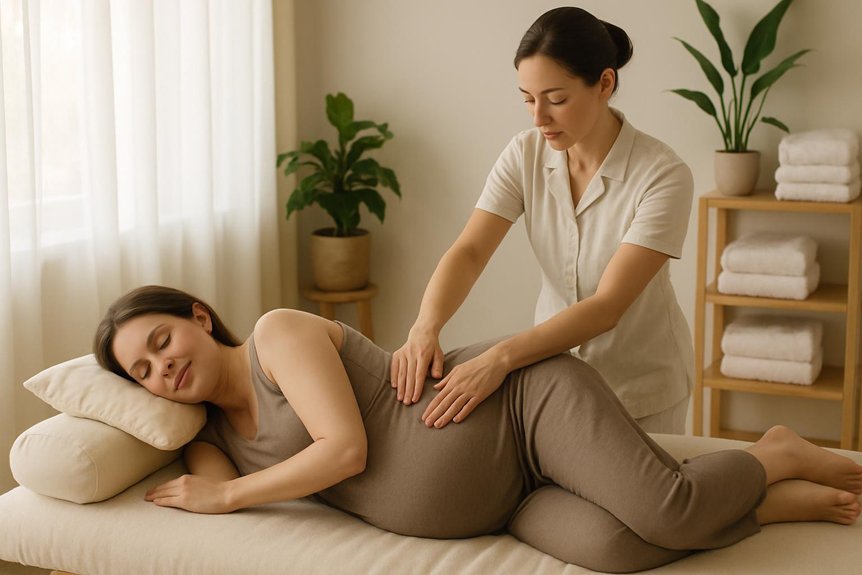
How do therapists make certain that every maternity massage meets the unique needs of each client? At Spa & Massage, therapists begin with a thorough consultation to understand each expectant mother’s health, comfort levels, and specific areas of concern. This allows them to adapt pressure, techniques, and positioning to suit individual preferences and medical guidelines. Special cushions and supports are used to ensure comfort and safety at all times. Therapists remain attentive to subtle feedback, adjusting their approach to nurture and soothe both body and mind. Open communication is encouraged throughout the session, fostering trust and reassurance. Every detail—from room temperature to gentle, pregnancy-safe oils—is considered, creating a deeply personalised experience that honours and supports the intimate journey of pregnancy.
Recommended Massage Types for Each Trimester
Which massage approaches are most suitable as pregnancy progresses? In the first trimester, gentle relaxation techniques—such as light Swedish massage—are preferred, focusing on calming the nervous system and easing early tension. At Spa & Massage, therapists avoid deep tissue methods during these early weeks, prioritising comfort and safety. By the second trimester, as the body adapts, side-lying positioning becomes standard to support circulation and comfort. Therapists may incorporate soothing aromatherapy blends approved for pregnancy, enhancing relaxation. In the third trimester, treatments continue to prioritise gentle, nurturing touch, targeting common areas of discomfort such as the lower back, legs, and feet. Throughout all stages, Spa & Massage therapists adapt their techniques and communication, ensuring a supportive, intimate experience tailored to each client’s evolving needs.
Aftercare Tips for Maximising the Benefits of Maternity Massage
Following a maternity massage, thoughtful aftercare supports the body’s natural healing and enhances the positive effects of the treatment. At Spa & Massage, therapists recommend drinking plenty of water to help flush out released toxins and reduce any lingering tension. Gentle movement, such as a short walk or light stretching, maintains circulation and prolongs relaxation. Rest is equally important—taking time to lie down or nap allows the body to fully integrate the benefits. Clients are advised to avoid strenuous activities and heavy meals for a few hours post-massage. Using a pillow to support the body and practicing deep breathing at home can further promote comfort. These practices, encouraged by Spa & Massage, help create a nurturing environment for both mother and baby.
Conclusion
Massage therapy offers significant physical and emotional benefits for expectant mothers when provided by qualified professionals. Importantly, research indicates that up to 60% of pregnant women experience lower back pain, highlighting the importance of supportive therapies. With safety and comfort at the forefront, Spa & Massage’s expert team ensures each session is tailored to individual needs, helping mothers-to-be manage discomfort and stress. Prioritising expert guidance, prenatal massage can be a safe, nurturing addition to prenatal care.
